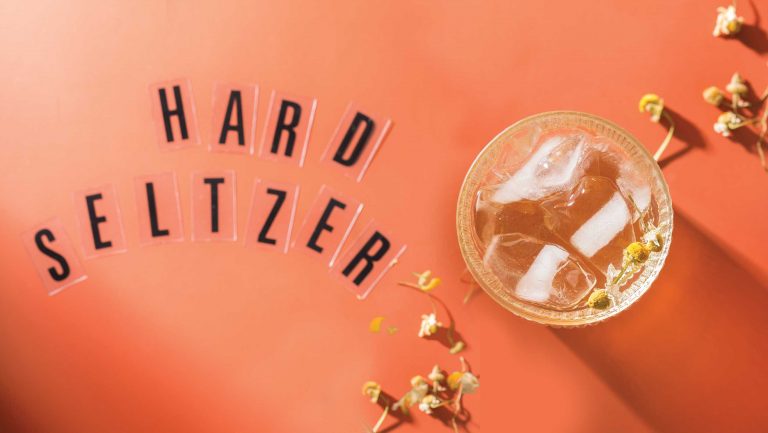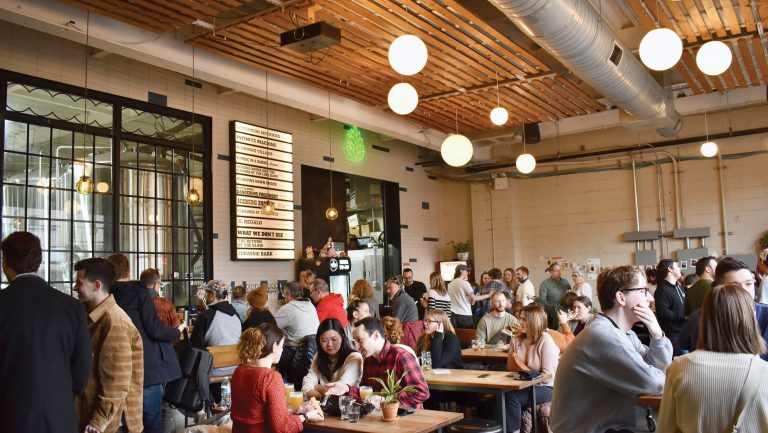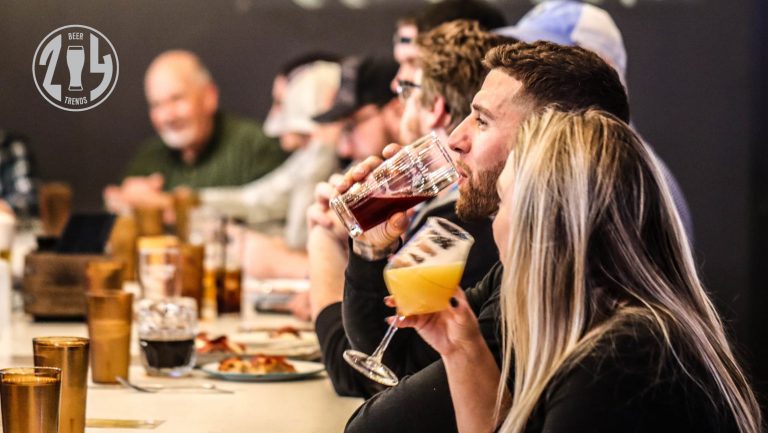After Jack’s Abby partnered with the Boston Celtics in summer 2020 to become the basketball team’s official craft brewery, the Framingham, Massachusetts, lager maker developed its dream beer to drink while players dribbled. The brewery released the agreeably bitter and citrusy Pride and Parquet in early 2021 at a moderate 5.7% ABV.
Early sales took off, but the hoppy lager never reached the predicted sales goals. Maybe it was the pandemic, which prevented fan attendance at games, or maybe the brewery had misfired. “It was doing fine, but was it the right fit?” asks Rob Day, the vice president of marketing for Jack’s Abby.
Last fall, the brewery swapped Pride and Parquet for a beer that might better align with sports: a light lager. By January, Banner City at 3.8% ABV was the brewery’s top-selling six-pack (retailing at $9.99) or four-pack (at $10.99), according to IRI data, crushed by fans both at home and in the stands.

Don’t miss the latest drinks industry news and insights. Sign up for our award-winning newsletters and get insider intel, resources, and trends delivered to your inbox every week.
Craft breweries once viewed light lagers as the realm of industrial brewers, mass-produced and sold in bulk for a song. Fragrant pale ales, intense IPAs, and silky stouts served as flavorful differentiation, and customers gladly paid extra for pints and six-packs. But with inflation, layoffs, and recessionary fears headlining the news, well-executed light lagers are emerging as an affordable tool to corral craft consumers watching their wallets and bring mass-market drinkers into the fold. “How do you reach different audiences outside of the craft bubble? This is it,” says Day.
Embracing Light Lager Is an Economic Boon for Brewers
Rolling out new releases weekly can attract taproom customers, but selling dozens of beers in the market is difficult. “It’s super-overwhelming for a salesperson to walk into an account and be like, I have to talk to you about 30 things,” says Christa Brenner, the marketing and brand director for Short’s Brewing in Elk Rapids, Michigan.
Making many offbeat beers was once the calling card for Short’s. It opened in 2004 and soon gained attention for a range of beers that might evoke a Bloody Mary or key lime pie. Several years ago, Short’s adjusted its sales strategy by turning to a trusted friend: Local’s Light, a lager originally introduced at its inception. “We [first] made Local’s Light so that local people in our town would come in,” says Brenner.
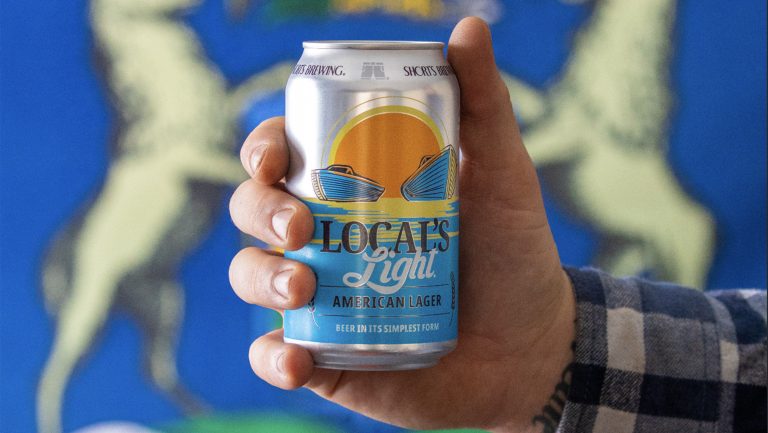
The sales team repositioned Local’s as an alternative for a craft consumer looking for something beyond another IPA and a potential swap for a macro lager. “That’s our foot in the door,” says Brenner, noting that price helps. Like many light lagers, Local’s is built from a relatively simple grain bill with a light hop load; this keeps cost in check. Local’s Light typically sells for around $100 per half-barrel keg and six-packs retail for around $6.99. “That is really strategic for us,” says Brenner. Sales of Local’s Light increased 10 percent last year, and it’s now Michigan’s top-selling craft lager.
Braxton Brewing Company introduced Garage Beer in 2018, the light lager designed to be an anytime option both in ABV (4%) and price. A 15-pack might run $15.99. “If we’re not careful as craft brewing providers, we are going to price the customer out of the category,” says cofounder and CEO Jake Rouse.
The brand kept growing and growing, leading Braxton to create the standalone Garage Beer Co. earlier this year. Braxton will produce the lager, which is being positioned for growth beyond the brewery’s regional base. The label redesign swaps Braxton’s logo with an illustrated garage, placing the ABV and its 95-calorie count front and center. “When we look at this market, we see a new pocket of opportunity that exists just beneath craft beer,” says Rouse.
Sales of classic light lagers like Bud Light have been in steady decline, but premium active-lifestyle light lager Michelob Ultra continues to ascend. “The one reliable rock-steady growth engine is Michelob Ultra,” says Doug Campbell, the CEO of Eight Beer, headquartered in Austin, Texas.
Eight takes a similar sports-minded approach with its “elite light lager” that counts football analyst and former Dallas Cowboys quarterback Troy Aikman as a partner. (Eight was his playing number.) The light lager contains organic grains, 90 calories, and 2.6 carbohydrates per 12-ounce serving, a tweak on Ultra’s tested template. “We see a clear opportunity to make a better version of something that is tried and true,” says Campbell.
The light lager launched last January in Texas, its sole market, and is now sold in 50 percent of Texas grocery stores. “Craft beer has taught people to expect more from beer overall in all categories, including light beer,” says Campbell.
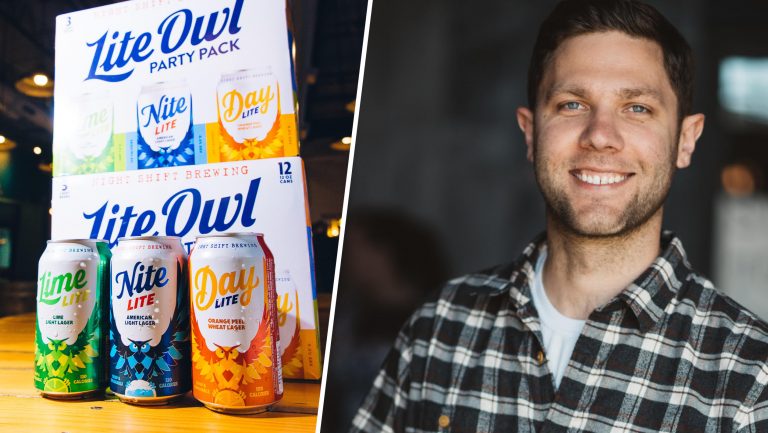
Labels Communicate Lightness
Looks matter when it comes to selling light lagers. Having a label design that communicates crispness is key, setting thirst-quenching visual cues. Night Shift Brewing in Everett, Massachusetts, has seen its Nite Lite lager become a top-three brand by volume, though the black label with a rainbow owl caused some consumer confusion. “Many people thought Nite Lite was a dark, heavy beer,” says cofounder Michael Oxton. “They assume light beer looks a certain way.”
Last fall, Night Shift rebranded its Nite Lite with a playful illustrated owl and red, white, and blue color palette. The new design “gives it a slightly nostalgic feel,” says Oxton, who also offers Nite Lite in a 12-pack featuring Lime Lite and the orange peel-infused Day Lite.
Heritage light lagers are also looking backward for fresh branding. Natural Light was Anheuser-Busch’s first low-calorie release in 1977—predating Bud Light by five years. (The brewery is now part of Anheuser-Busch InBev, or ABI.) Natural Light became a collegiate staple. “We were so narrowly focused on legal drinking-aged consumers,” says Krystyn Stowe, the head of marketing for the Busch and Natural brand families, but digging into research, ABI discovered that older customers were buying Natural Light too, as a beach and boat beer.
Early this year, ABI rebranded Natural Light with a retro feel echoing its late-70s origins that “allows consumers to reappraise us,” says Stowe. The company is now positioning Natural Light around the lifestyle concept of “coastal living,” focusing on Maryland, Virginia, and North and South Carolina.

Light Lagers Draw New Customers
Offering an affordable light lager can also make any brewery taproom more approachable. At Love City Brewing in Philadelphia, the brewery’s flagship Love City Lager (4% ABV) sells for $5 per pint, or $3 during happy hour. “Our focus has always been to be accessible and inclusive, and part of that is price point and flavor profile,” says Mo Stubbs, the sales director.
Cinderlands Beer does a large chunk of business out of its taprooms and brewpubs in and around Pittsburgh, drawing a broad spectrum of beer drinkers. Invariably, customers will request domestic lagers by name. “We point them to Lil’ Cinder,” says Paul Schneider, the partner and head brewer, of the brewery’s 4.2% ABV light lager.
Lil’ Cinder is served in half liters for $6 and by the pitcher when big sporting events are playing on TV. “Lil’ Cinder flies out of the bar left and right,” says Schneider, an accessory to good times instead of the main event. A light lager exists for enjoyment. “Not all beer has to be up on a pedestal where it has to be considered, quaffed, and dissected.”
The last 40-plus years have been a great American crash course in brewing history. Brewers have spelunked the past and fermented new futures, a rollicking journey that might be coming full circle. “We went through all the styles, and now we’re back to what a lot of people like, which is an easy-to-drink, refreshing, tasty beverage,” says Campbell.

Dispatch
Sign up for our award-winning newsletter
Don’t miss the latest drinks industry news and insights—delivered to your inbox every week.
Contributing editor Joshua M. Bernstein is a beer, spirits, food, and travel journalist, as well as an occasional tour guide, event producer, and industry consultant. He writes for the New York Times, Men’s Journal, New York magazine, Wine Enthusiast, and Imbibe, where he’s a contributing editor in charge of beer coverage. Bernstein is also the author of five books: Brewed Awakening, The Complete Beer Course, Complete IPA, Homebrew World, and Drink Better Beer.



